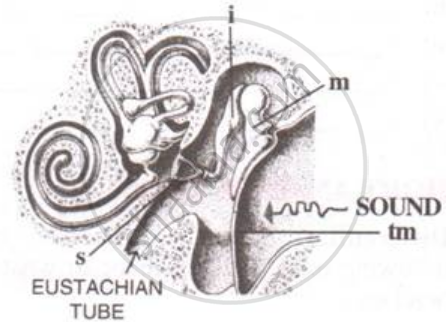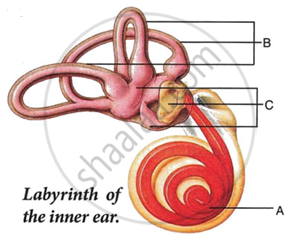Advertisements
Advertisements
Question
How could you convince a small child that when you speak, it is not necessary for air to travel from you mouth to the ear of listener?
Solution
There is no actual movement of air from the sound-producing body to our ear. The air layers only vibrate back and forth and transfer the sound energy from one layer to the next layer and fall on our ears; the eardrums vibrate accordingly and reproduce the sound.
APPEARS IN
RELATED QUESTIONS
Time taken by an object to complete one oscillation is called ___________.
Which part of our ear is shaped like a snail shell?
Note the relationship between the first two words and suggest the suitable word for the fourth place.
sound : ear drum :: Dynamic balance : ……
Mention if the following statement is true (T) or false (F) Give reason.
The auditory nerve is purely for perceiving sound
The figure below is the sectional view of a part of the skull showing s sense organ:

Name the sense organ.
Given below is the diagram of the human ear. Study the diagram and then answer the questions that follow:

(i) What role does the eardrum play in hearing?
(ii) What common term is given to the parts labeled A, B, and E?
(iii) Would there be any difference if these three parts mentioned in (ii) above were replaced by one by one? Why?
(iv) Give the biological term for the parts labeled C and D.
(v) Name the fluid which fills the parts mentioned in (iv) above.
(vi) State the functions of the ear.
Choose the Odd One Out:
Note the relationship between the first two words and suggest the suitable word/words for the fourth place.
Semi-circular canal : Ampulla :: Cochlea : ______.
With reference to human ear answer the question that follow:
Name the part of the ear associated with dynamic balance.
Given below is the diagram of a part of the human ear. Study the same and answer the questions that follow:
 |
- Give the collective biological term for Malleus, locus and Stapes.
- Name the parts labelled A, B and C in the diagram.
- State the functions of the parts labelled 'A' and 'B'.
- Name the audio receptor region present in the part labelled 'A'.
